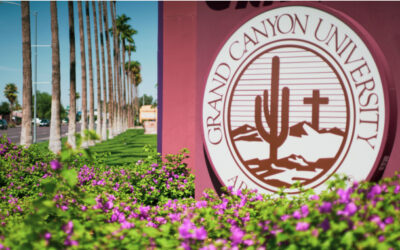By Terri Jo Neff |
Valley Metro Transit will formally begin streetcar service in Tempe later this month as part of a $190 million public transportation project which began construction in 2018 and has been funded by federal grants, regional funding, and local public-private partnerships.
Operation of the streetcar, which is smaller than the light rail vehicles typically seen in the metro area, will be paid by the City of Tempe. The three-mile route is slated to service the ASU- Tempe campus, downtown Tempe, Gammage Auditorium, Sun Devil Stadium, and Tempe Beach Park starting May 20.
But while Tempe is expanding its public transit options, questions are being raised in other parts of the Phoenix metropolitan area where some bus routes frequently attract less than a handful of riders, day after day. Valley Metro’s own reports confirm significantly low ridership on some route, drawing attention to the cost and associated problems in providing regional public transit.
Transit officials in the Valley attribute some of the ridership changes seen in late 2021 and early 2022 to the effects of service reductions and route changes due to COVID-19. For the year ending June 30, 2019 there were more than 49 million pre-pandemic Valley Metro bus riders, which dropped to 39.7 million the next fiscal year which included the first six months of COVID-19 cases.
However, the unreliability of public transit and mask mandates forced many residents to find other options and they have been slow to return. For the Fiscal Year ending June 30, 2021 there were less than 21 millions Valley Metro bus riders, according to public records. Valley Metro light-rail ridership also dropped around 50 percent from FY 2020 to FY 2021.
While a lack of ridership is a growing concern in the Phoenix metro area, it is the change in rider demographics that is currently creating problems for Tucson’s Sun Tran bus service, according to the union representing the drivers.
Teamsters Local Union 104 reports there were only 14 physical assaults on its drivers in 2018. That jumped to 47 in 2021, while there have already been 17 as the end of April, putting Sun Tran on track for more than 50 attacks this year.
But those numbers, union officials say, do not include verbal threats and abuse directed toward drivers, who are also called coach operators. And then there is the escalation in the frequency and cost of property damage to the buses, as well as public health issues.
The union insists the problem is directly tied to the City’s decision to waive all bus fees during the pandemic in an effort to aid workers and students who relied on public transit. The waiver, paid for by $43 million in federal pandemic funding, is set to end this summer, and union officials say it cannot come soon enough.
Teamsters 104 contends Tucson’s city buses have become “a mobile refuge from the elements frequented by drug users, the mentally ill and violent offenders” due in part to the fee waiver. The usual fare-paying rider is no longer using Sun Tran to get to work, school, or medical appointments, having been replaced by non-paying passengers who instead “ride for hours on end, sleep on the buses, abuse drugs, relieve themselves and assault drivers,” the union says.
Another consequence of the free fair-induced change in ridership, the union says, is that those for whom the public transit was designed are now choosing alternative methods of transportation to avoid risks to their health and safety, especially elderly riders and those who have children. The situation, Teamsters 104 claims, has resulted in a workplace environment that has deteriorated for Sun Tran drivers while “lawlessness abounds and violence in commonplace.”
Meanwhile, the City of Sierra Vista discontinued three intracity fixed routes of its Vista Transit on Monday. In their place, city officials approved a new limited bus route with stops at the county’s major hospital as well as at state and county offices located with the city.
The change, which was noted as temporary but with no end date, means there will no longer be fixed route bus service available to and from Fort Huachuca. And while the city’s announcement puts the blame on “staffing shortages,” local residents as well as city officials have commented about the dearth of riders in post-pandemic months.
Vista Transit was one of the first in the state to change over to smaller, less expensive buses several years ago. And with budget season in full force, it is likely city bus service will look much different when the suspension is lifted, according to officials.
At the same time Sierra Vista is making serious cuts to its public transit options, the Town of Gilbert is considering whether to spend nearly $290,000 to study bringing commuter rail service to its town. The proposal has received pushback from local taxpayers as well organizations like the Arizona Free Enterprise Club concerning efforts by some town officials to keep the matter a secret.








